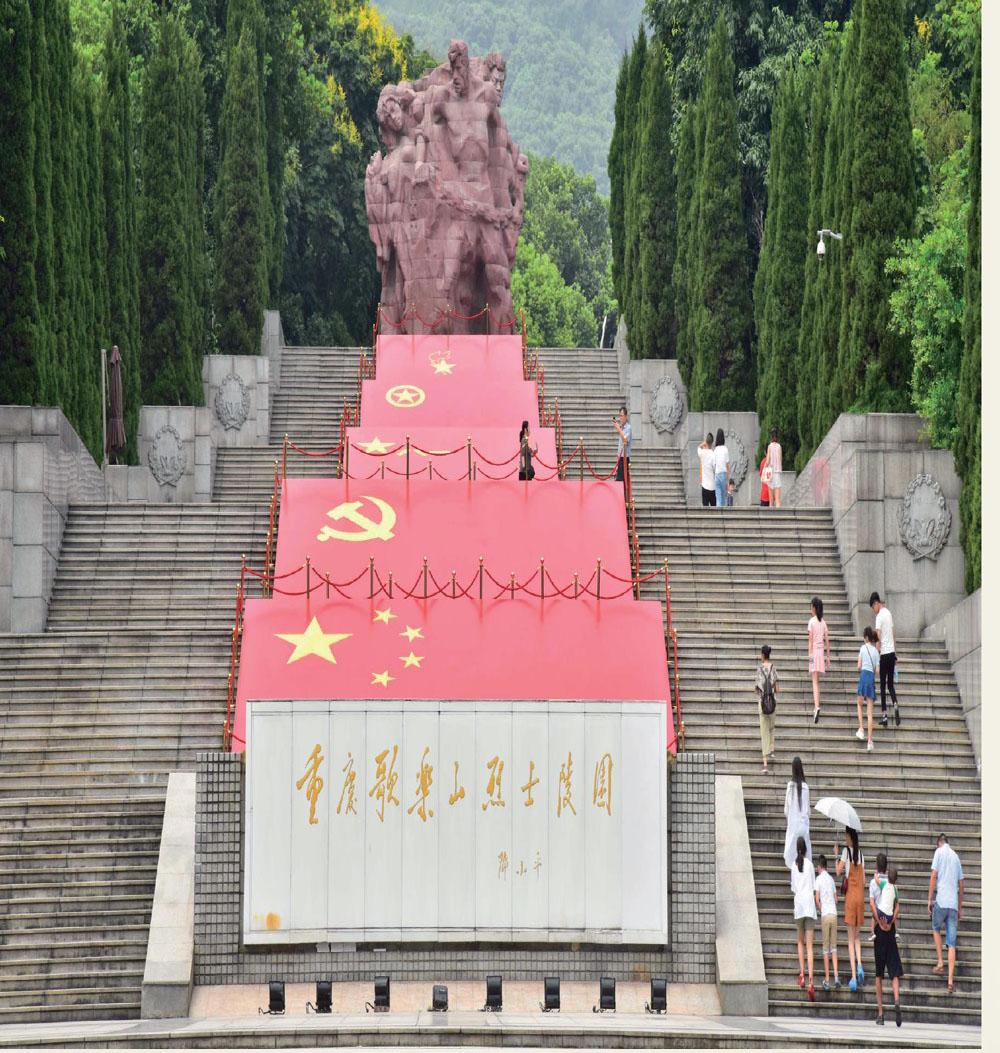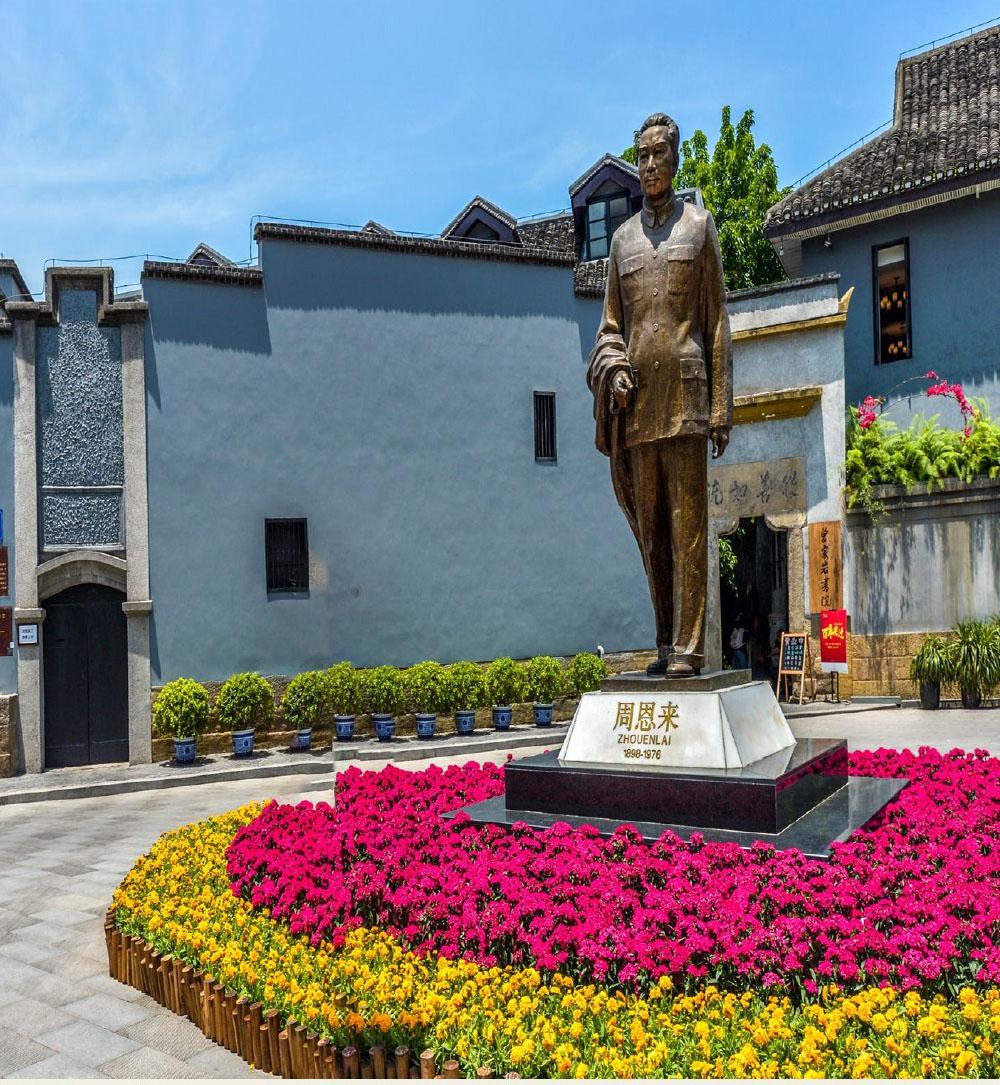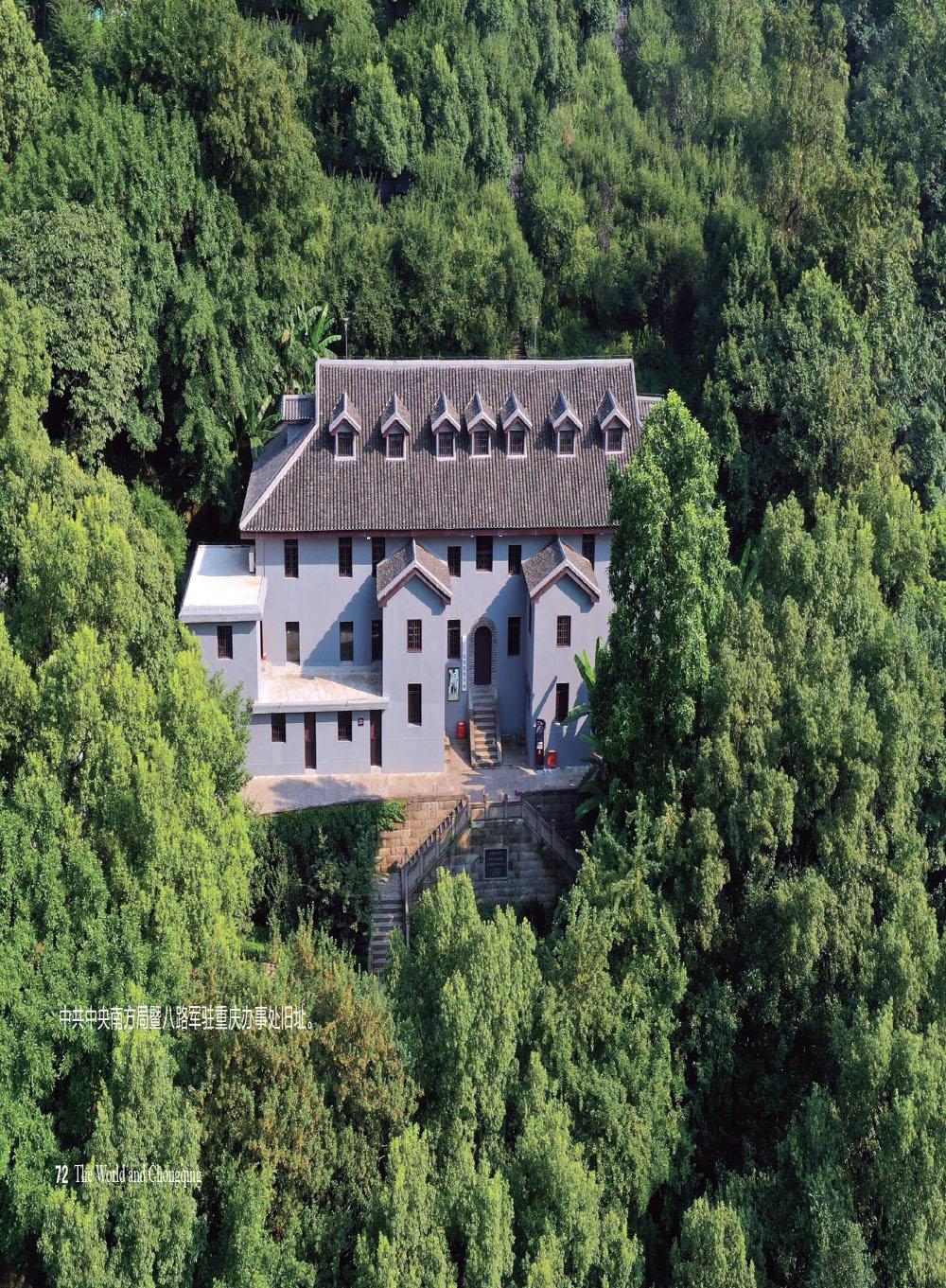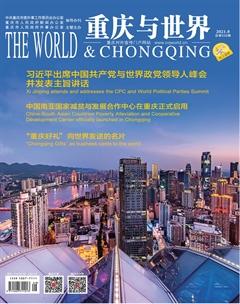英雄的土地 在山城重庆追寻红色印记
杨艳



为庆祝中国共产党成立100周年,文化和旅游部联合中央宣传部、中央党史和文献研究院、国家发展改革委推出“建党百年红色旅游百条精品线路”。其中,重庆共有4条线路上榜,这无疑证明了2019年习近平总书记在重庆考察工作结束时讲话中提到的那句话:“重庆是一块英雄的土地,有着光荣的革命传统。”
今年是中国共产党成立100周年,重庆的红色旅游景点迎来参观高峰,来自全国各地的人们在红色景点缅怀革命先烈,追寻红色印记,掀起红色旅游热潮。
红色资源是中国共产党艰辛而辉煌奋斗历程的见证,是最宝贵的精神财富。据统计,重庆现有不可移动革命文物417处,其中,全国重点文物保护单位46处、市级文物保护单位95处、区县级文物保护单位145处、一般不可移动文物131处。
7月27日,重庆市委宣传部副部长、电影局局长张洪斌在重庆市革命文物保护利用工作新闻发布会上介绍,这些革命文物分布在重庆39个区县,并呈“一心、两老、两帅、三片”的格局。“一心”是以红岩革命文物为中心的主城都市区片区,“两老”就是老一辈无产阶级革命家杨闇公、赵世炎故居和纪念馆。“两帅”即刘伯承、聂荣臻元帅故居和纪念馆,“三片”即以綦江为重点的长征片区、以酉阳为重点的湘鄂川黔片区、城口川陕片区。在革命文物所在时间序列上,基本覆盖了旧民主主义革命以来的各个历史阶段,特别是红岩革命文物承载的红岩精神纳入中国革命精神谱系,红岩品牌成为重庆的金色名片。
如今,游览曾家岩50号(周公馆)、红岩村、渣滓洞、白公馆等红色旅游经典景区,品味红色文化,已成为许多游客来重庆“寓教于游”的必选项。同时,各大红色景点也开始创新不断,通过红色演艺、红色文创以及沉浸式体验的推出,吸引了更多年轻化客群。
比如,川剧《江姐》、话剧《红岩魂》、歌剧《尘埃落定》等优秀舞台剧目场场爆满,今年开演的大型紅色旅游实景演艺剧目《重庆·1949》,凭借高科技的舞台表现手法,再现了中国人民解放军解放重庆,并与重庆人民一起保卫城市的宏大场景,圈粉无数。
还有一大批党史题材优秀舞台剧目登上舞台:以红岩英烈张露萍为原型的大型舞剧《绝对考验》、红色题材杂技剧《一双绣花鞋》、囊括共产党百年经典音乐片段反映建党百年光辉历程的音乐会《太阳颂》、以芭蕾舞方式演绎共产党员坚贞不屈斗争精神和坚守共产主义理想信念的芭蕾舞精品节目《百年红梅颂》等优秀文艺作品……让游客白天观景点,夜晚看演出,充分感受重庆的红色文化。
值得一提的是,据重庆市文化和旅游发展委员会一级巡视员江卫宁介绍,作为文物保护利用的重要内容,重庆已纳入了长征国家文化公园建设范围,重庆段建设范围涉及綦江、酉阳、城口、黔江、石柱、秀山、彭水等7个区县。
“目前,已审定通过了长征国家文化公园重庆段建设实施方案和规划,明确以中央红军长征线路为主,兼顾红二、红四方面军长征线路,着力打造綦江、酉阳、城口3个主体建设区(其中,城口作为红四方面军市级重点拓展区),以及黔江、石柱、秀山、彭水4个拓展区的‘3+4公园体系。”这意味着除了现有的红色旅游景区,未来又将新添多个好去处。
图片/市文化旅游委提供
In celebration of the centenary of the Founding of the Communist Party of China (CPC), the Ministry of Culture and Tourism has launched the "100 selected red tourism routes marking the centenary of CPC" jointly with the Publicity Department of the CPC Central Committee, the Institute of Party History and Literature of CPC Central Committee and the National Development and Reform Commission. The list includes four routes in Chongqing, undoubtedly proving the sentence General Secretary Xi Jinping delivered in his speech at the end of Chongqing inspection work in 2019, "Chongqing is a heroic land with glorious revolutionary traditions."
With the centenary of the Founding of the Communist Party of China (CPC) this year, the red tourism attractions in Chongqing ushered in a visit peak. People around the country entered the red sites to retrieve the memory of the revolutionary martyrs and follow the red marks, unveiling a red tourism boom.
Being the most precious spiritual wealth, the red resources serve as witness to the arduous yet glorious struggle of the Communist Party of China. According to statistics, there are 417 immovable revolutionary relic sites in Chongqing, including 46 national key cultural relic protection sites, 95 municipal-level cultural relic protection units, 145 district- and county-level cultural relic protection units and 131 generally immovable relics sites.
On July 27, Zhang Hongbin, deputy head of Publicity Department of the CPC Chongqing Committee and head of Chongqing Film Administration, introduced at a press conference on the protection and utilization of revolutionary relics in Chongqing that such relics are distributed in 39 districts and counties in Chongqing with the "one center, two predecessors, two marshals and three areas" pattern. "One center" refers to the metropolitan area of the city proper centered on Hongyan revolutionary relics; "two predecessors" mean the former residences and memorial museums of the proletarian predecessor revolutionists Yang Angong and Zhao Shiyan; "Two marshals" stand for the former residences and memorial museums of Marshal Liu Bocheng and Nie Rongzhen; "three areas" represent the Long March area with Qijiang as the focus, the Hunan-Hubei-Sichuan-Guizhou area and Chengkou Sichuan- Shaanxi area with Youyang as the focus. In the time sequence of the revolutionary relics, various historical stages since the Old Democratic Revolution are basically covered. In particular, with Hongyan spirit carried by the Hongyan revolutionary relics incorporated into the Chinese revolutionary spirit genealogy, the Hongyan brand has become the golden landmark of Chongqing.
At present, visiting the classic red attractions such as 50 Zengjiayan (Zhou Residence), Hongyan Village, Zhazi Cave, White Residence, etc. and savoring the red culture have become a must for many tourists to experience "educational travel" in Chongqing. At the same time, with constant innovation, various red sites have attracted more younger visitors by unveiling red art performances, red cultural creations and immersive experiences.
For example, Sichuan opera Sister Jiang, drama Hong Yan Hun, opera Red Poppies and other excellent stage plays are packed with audience members every time. The large-scale red tourism live-action art performance show Chongqing · 1949, leveraging high-tech stage expression techniques, revisits the grand scene of PLA liberating Chongqing and defending the city together with the Chongqing people, was put on this year with high popularity.
Moreover, a host of other selected stage plays with the theme of Party history are also shown, such as large-scale dance drama Absolute Test based on the Hongyan martyr Zhang Luping, red theme acrobatic drama A Pair of Embroidered Shoes, concert Ode to the Sun encompassing classic music fragments of the Communist Party's centenary and the glorious centennial course after the founding of the Party, as well as refined ballet show Ode to the Centennial Red Plum Blossoms epitomizing the CPC members unyielding and struggling spirit, along with their adherence to the communist ideals and beliefs, and other outstanding literary and artistic works. The tourists can thus visit the attractions during the day and watch the performances at night, so as to fully explore the local red culture.
It is worth mentioning that, according to Jiang Weining, level-I inspector of Chongqing Municipal Development Committee of Culture and Tourism, Chongqing, as the part and parcel of the protection and utilization of cultural relics, has been incorporated into the construction scope of the national Long March cultural parks, involving 7 districts and counties such as Qijiang, Youyang, Chengkou, Qianjiang, Shizhu, Xiushan and Pengshui in Chongqing section.
"For the time being, the implementation scheme and planning on the construction of the national Long March cultural parks in Chongqing section have been approved. Prioritizing the Central Red Armys Long March route and taking Long March routes of the Second Front Army and the Fourth Front Army into account, such scheme and planning highlight the building of three main construction areas of Qijiang, Youyang, and Chengkou (among them, Chengkou acted as a key municipal-level expansion area of the Fourth Front Army), and the '3+4' park system in the four expansion areas of Qianjiang, Shizhu, Xiushan, and Pengshui.” This means that multiple new destinations will emerge in the future apart from the existing red tourism sites.
Photos / Provided by Chongqing Municipal Development Committee of Culture and Tourism

